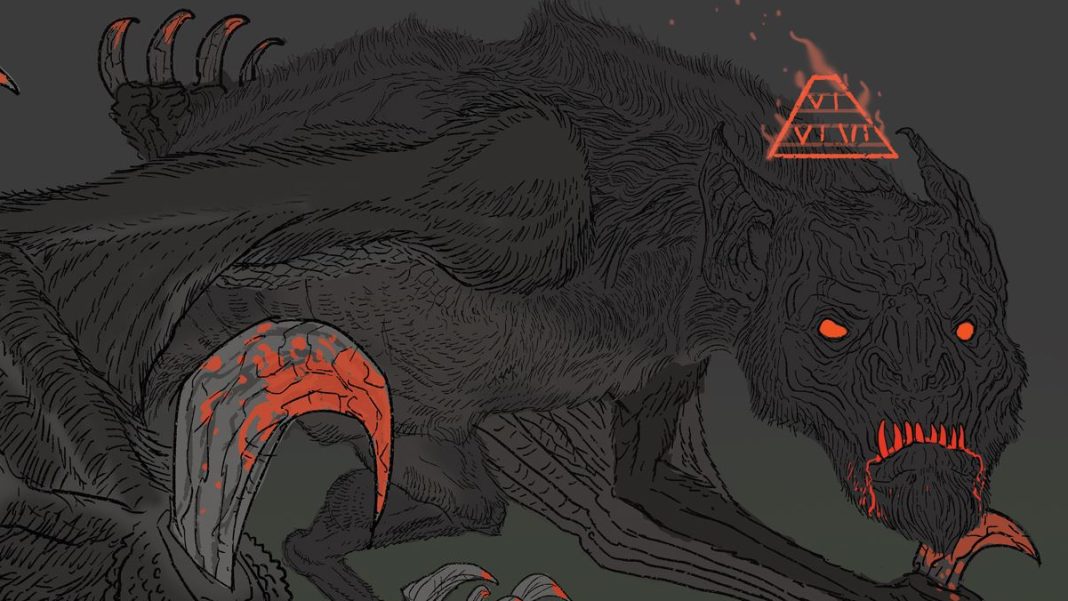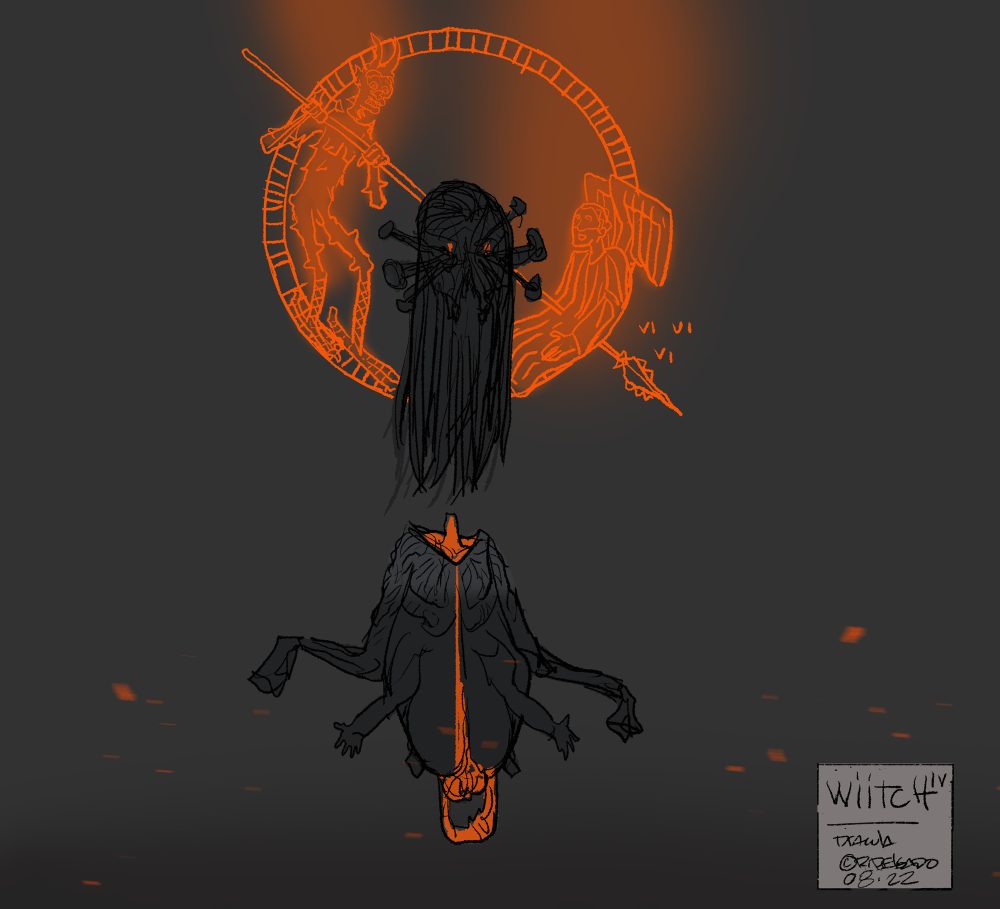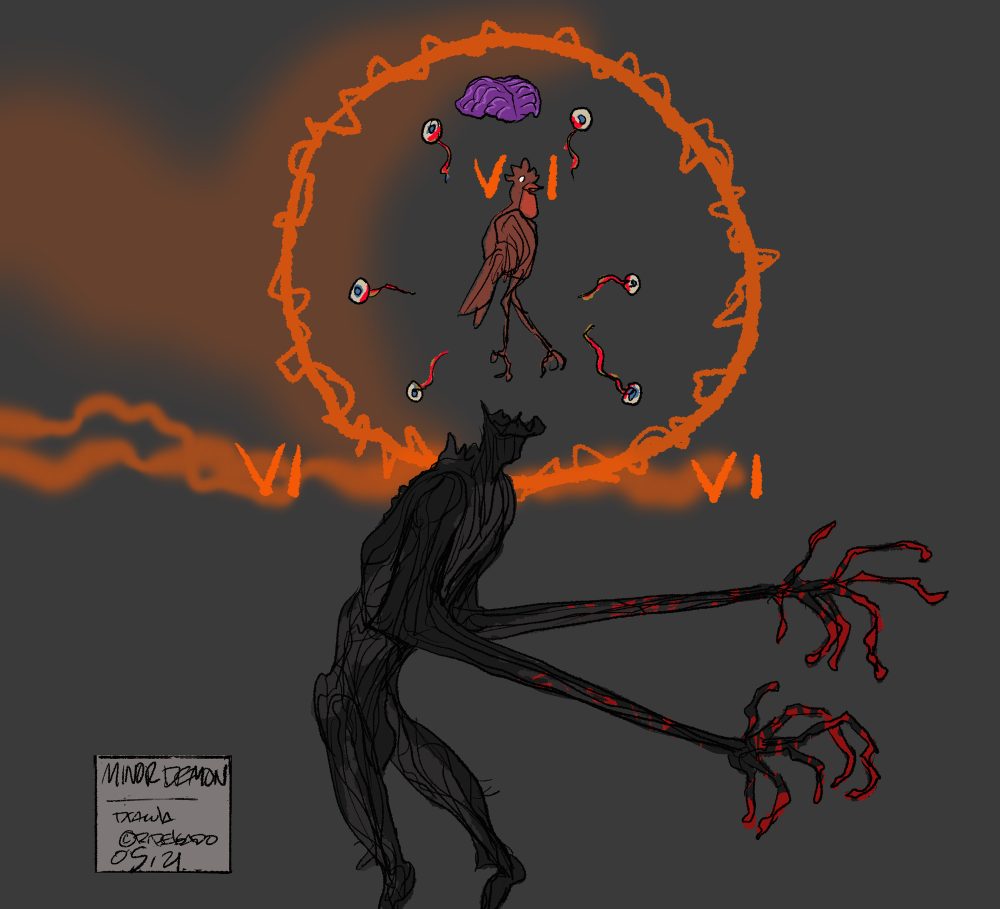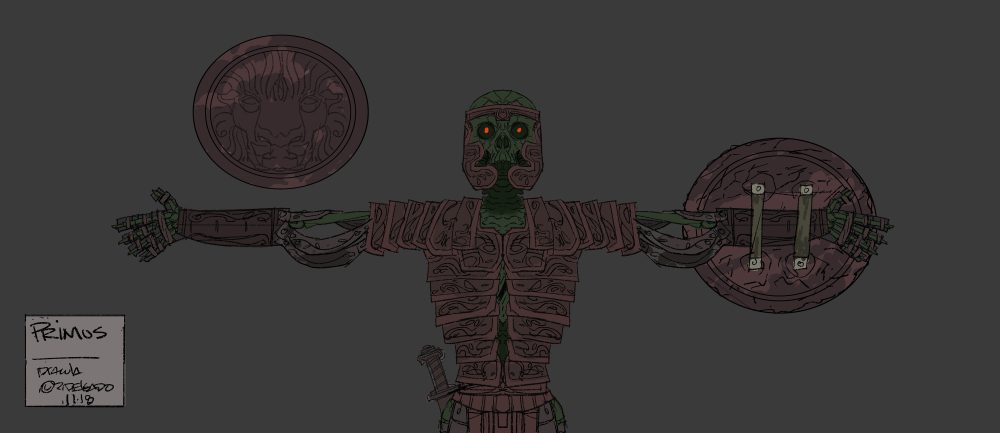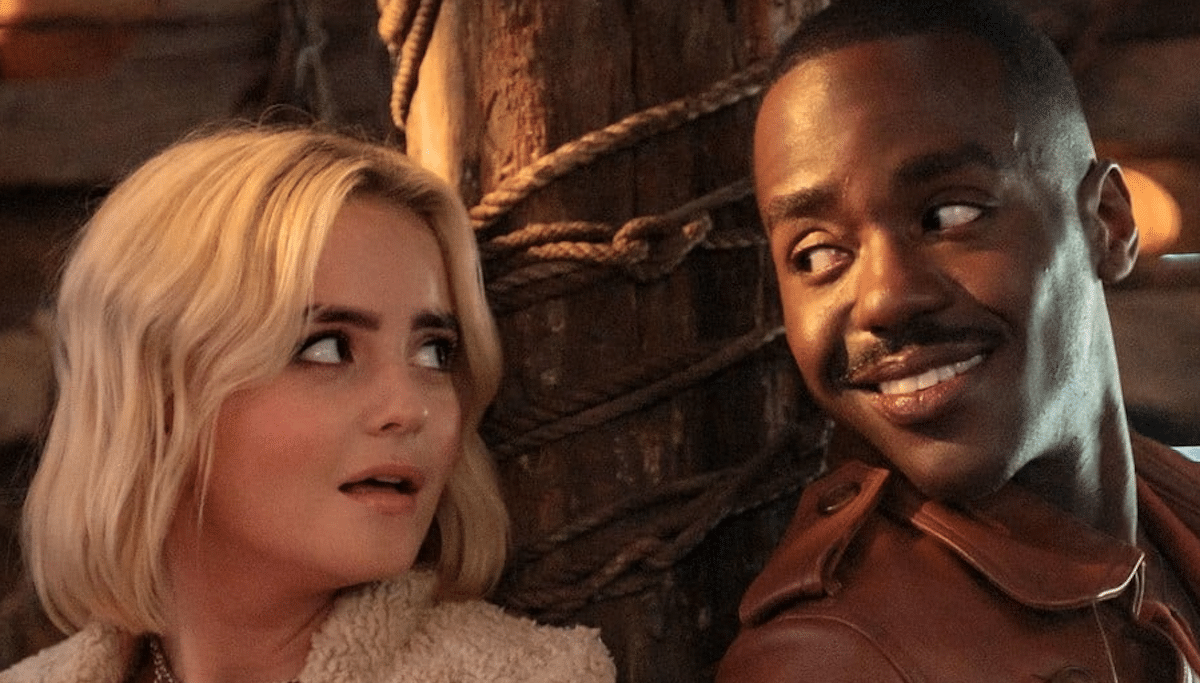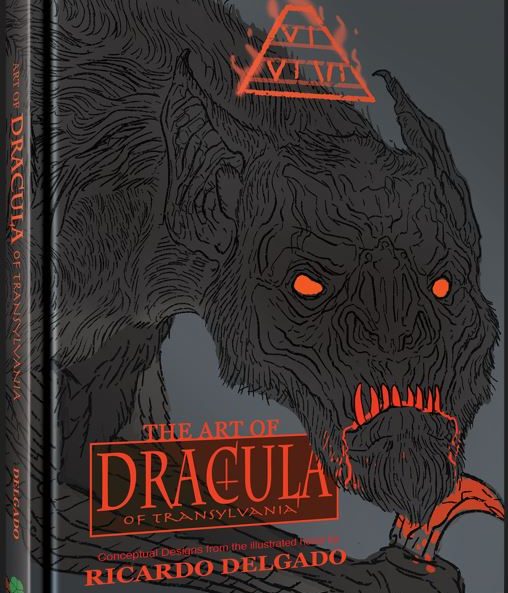
Seeing Ricardo Delgado’s version of Dracula for the first time, in his illustrated novel Dracula of Transylvania, feels like watching Christopher Lee’s Dracula for the first time after only knowing Lugosi’s rendition for so long. Delgado offers a version of the iconic vampire that embraces its monstrous side, that looks like a bloodthirsty demon, in parts, that struggles with containing its desire to feed every chance he gets.
Delgado is expanding his vision for Dracula in a new book called The Art of Dracula of Transylvania, featuring 200 pages of art that builds upon the original work’s settings and creatures. Witches, ghosts, and demonic entities all get the same treatment Dracula gets, portrayed more as things that come straight out of Hell than any other place.
There’s a dark, occult sensibility to these illustrations that should appeal to fans of Hellboy and the several BPRD books. Delgado, who also illustrated The Age of Reptiles (a wonderful dinosaur book), leans on the grotesque for his creatures, indulging in gore without overdoing the effect. His monsters carry a lot of story in their physical qualities. Readers would do well to explore each drawing closely to really get at the horror Delgado conjures with each one.
The Art of Dracula of Transylvania is currently in the process of being funded on Kickstarter and it it’s looking at a February 2023 release.
The Beat corresponded with Delgado to discuss Dracula, how scary he can be, and if there are other monsters that would benefit from complete a reimagining.
RICARDO SERRANO: Your interpretations of Dracula point to an interest in pushing the envelope with the character’s design and worldbuilding. What would be the best version of the vampire for you? What are the things that any good Dracula should have?
RICARDO DELGADO: All of this depends on the type of story you’re telling. There have been many interpretations of the Count over the decades, and I wanted to create a very malevolent version, a conqueror, an evil shadow that crushes everyone in his path. My Dracula is evil personified, suffers no fools and is the dark legend everyone is afraid of when you hear his name.
SERRANO: Do you prefer a more monstrous, bat-like version of Dracula or the more Hollywood classic version with the tux and cape?
DELGADO: The monstrous bat is something I’ve been wanting to do for a while. As someone who works in visual effects for a living, I know how much it would cost to create a bat in CG or with practical effects for a film or TV show, but here it costs nothing, and the bat form of my Dracula is like a marauding sabretooth. Merciless and terrifying. And his wolf form ain’t bad either. Total badass who must be defeated.
SERRANO: What does The Art of Dracula of Transylvania allow you to expand upon or showcase that you perhaps didn’t have the chance or space to show in the illustrated novel?
DELGADO: Oh, that’s easy. I did not have a chance to dive into designs for Dracula’s Castle other than the main image, and in this book I do a further exploration and examination of the count’s lair. We see how the castle is a collection of all the different places in the old world that Dracula has razed throughout the centuries, as well as a few of the supernatural entities that I did not get a chance to design in the first go-around. You’ll see witches here like you’ve never seen before, I can tell you that.
SERRANO: What other monster, classic or otherwise, would you like to reinterpret or redesign?
DELGADO: All of the classics would be fun, though there’s some 1950’s BEMs (bug eyed monsters) from a creature effects guy named Paul Blaisdell that would be pretty cool to re-interpret. Monster from Hell, Beast with a 1,000,000 Eyes, and From Hell It Came, to name a few. Would love to see a few of the giant insect movies from that decade also come back. Them, Giant Mantis, Tarantula and Black Scorpion.
SERRANO: Thanks for your time and keep on designing terrifying monsters.
DELGADO: Thanks for the interview and Happy Halloween!


